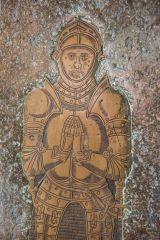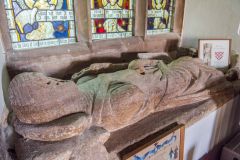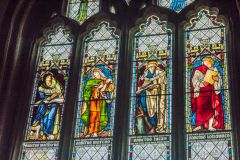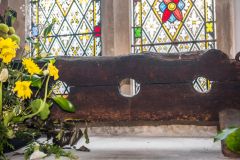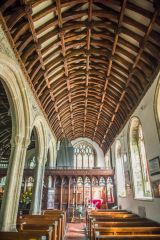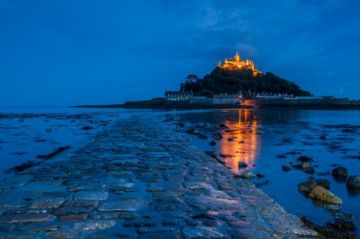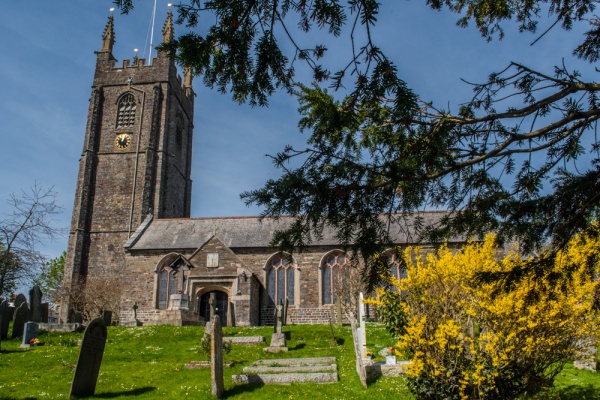
Stratton is a picturesque town just east of Bude. At the heart of the town stands St Andrew's Church, a beautiful 13th century building retaining Norman stonework from an earlier building on the site.
The church was extended in the 14th century with the addition of a north aisle and again in the 15th century when the elegant west tower was built. The church was restored in 1888 by the prolific JP St Aubyn.
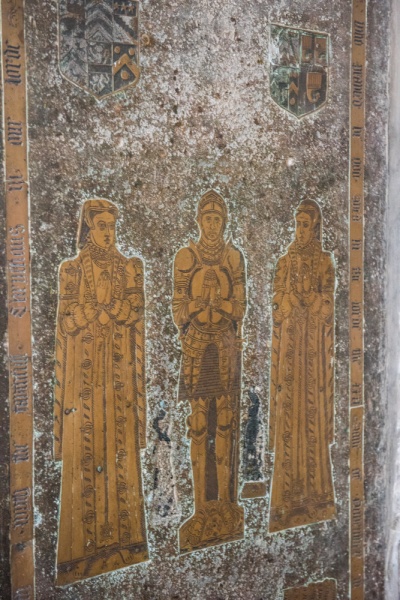
The 14th-century north aisle was a gift of Sir Ralph de Blanchminster. The beautiful arcade is made of Polyphant stone and is the oldest part of the building. By contrast, the south arcade is made of granite with high pointed arches in the Perpendicular style.
The Cornish Giant
When the 1888 restoration took place the floor was dug up, unearthing several old graves. Among the graves was one holding a casket with huge bones. These may have been the remains of Anthony Payne, the Cornish Giant, a local celebrity who died at the nearby Tree Inn in 1691. Unfortunately, the bones crumbled to dust when they were exposed to the air.
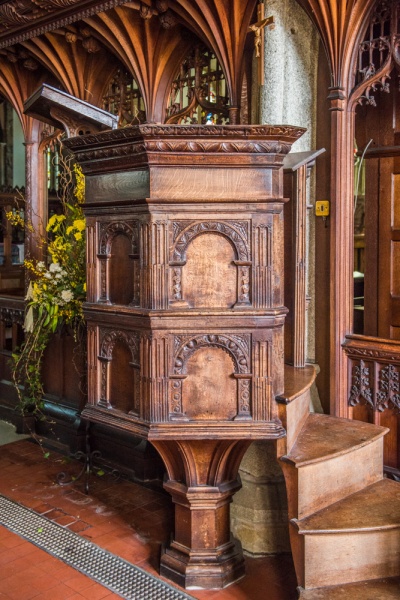
Stratton was the site of a Civil War battle on 16 May 1643. Against one wall is a display case with items found on the battlefield, including a sword, a spur, and several small cannonballs. Beside the battlefield relics is a copy of the letter of thanks sent by Charles I to the people of Cornwall, thanking them for their support against Parliament. Many churches in Cornwall have painted Letter of Thanks boards, but in Stratton's case, they display a copy of the actual document.
The tower screen acts as a war memorial. The oak benches were installed in 1961 but the bench ends are 16th century and are beautifully carved.
Jack of Tilbury
Against the west wall is a memorial brass to Sir John Arundell of Trerice, known sometimes as Jack of Tilbury. Sir John was a Royal Navy commander under Henry VIII and Edward VI, and earned his nickname as commander of Tilbury Fort in Essex.
He was knighted on the battlefield of the Battle of the Spurs in 1513 but really rose to prominence a decade later when he captured a notorious pirate. He served twice as Sheriff of Cornwall. Sir John is buried at Newlyn East but his brass is here in Stratton. He is shown in full armour, flanked by his two wives, Mary Beville (died 1526) and Juliana Erissey. The inscription reads:
'Here lyeth buriede Syr John Arundell Trerise, Knyght, who praysed be God dyed in the Lorde the xxv daye of November in the yeare of Oure Lorde God a MCCCCC lxi and in the iiixx and vii yeare of his age whose soule now resteth wyth the Faythfull Chrystians in our Lorde'.
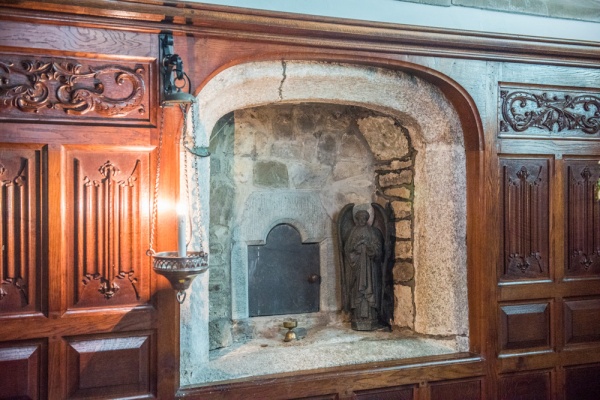
Curiously, the brass puts the date of Sir John's death as 25 November 1561, which appears to be a year after his actual death in 1560.
Against the north wall is a damaged effigy of a knight, thought to be a member of the Blanchminster family, probably the father or grandfather of the Blanchminster who paid for the 14th century north aisle. The effigy seems to have become damaged when it was moved to its present position from the south aisle.
The ornately carved wineglass pulpit is 17th century, though the base is modern. By the door is a Norman holy water stoup and in the sanctuary is a recess that may have ben used as an Easter Sepulchre.
The east window depicts the Four evangelists and was made by the William Morris company to a design by Edward Burne-Jones.
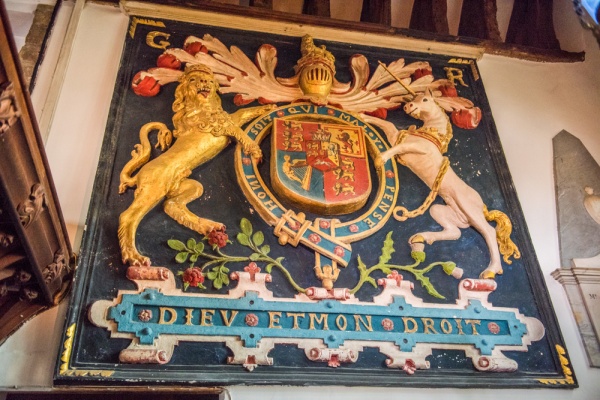
In the Lady Chapel is a fascinating royal coat of arms, made during the Stuart period but overpainted with the Hanoverian arms a century later. It was restored to its original Stuart state in 1964.
In the north aisle are a set of old stocks for punishing local miscreants. Maybe there was a problem with wrongdoers, for in the porch is a heavily studded wooden door from Stratton Gaol, now demolished, with iron nails that outlining the word 'Clink', vernacular in Cornwall and Devon for a prison of one or two cells.
St Andrews is a fascinating historic building, full of interest and well worth seeking out. It is usually open to visitors and was open when we visited.
About Stratton, St Andrew's Church
Address: Diddies Road,
Stratton,
Cornwall,
England, EX23 9DW
Attraction Type: Historic Church
Location: On-street parking near the church and in the town car park on Howell's Road (A3072)
Website: Stratton, St Andrew's Church
Location
map
OS: SS231064
Photo Credit: David Ross and Britain Express
HERITAGE
 We've 'tagged' this attraction information to help you find related historic attractions and learn more about major time periods mentioned.
We've 'tagged' this attraction information to help you find related historic attractions and learn more about major time periods mentioned.
Find other attractions tagged with:
NEARBY HISTORIC ATTRACTIONS
Heritage Rated from 1- 5 (low to exceptional) on historic interest
Poughill, St Olaf's Church - 1 miles (Historic Church) ![]()
Launcells, St Swithin's Church - 1.2 miles (Historic Church) ![]()
Bude Castle Heritage Centre - 1.6 miles (Museum) ![]()
Kilkhampton, St James Church - 3.3 miles (Historic Church) ![]()
Poundstock, St Winwaloe's Church - 4.7 miles (Historic Church) ![]()
Poundstock Gildhouse - 4.8 miles (Historic Building) ![]()
Morwenstow, St John's Church - 5.5 miles (Historic Church) ![]()
Penhallam Manor - 5.7 miles (Historic Building) ![]()
Nearest Holiday Cottages to Stratton, St Andrew's Church:
More self catering near Stratton, St Andrew's Church


